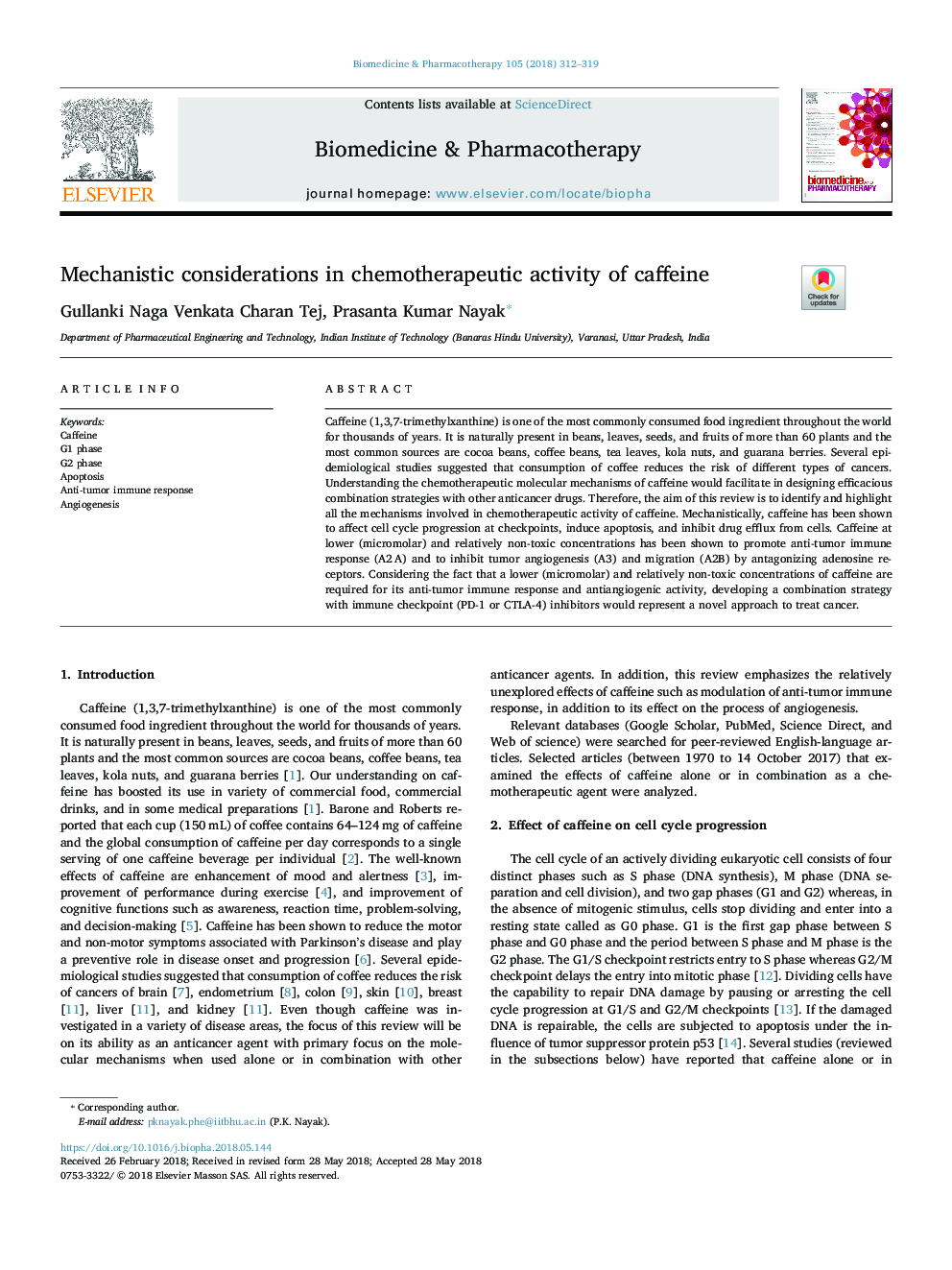| کد مقاله | کد نشریه | سال انتشار | مقاله انگلیسی | نسخه تمام متن |
|---|---|---|---|---|
| 8524604 | 1557937 | 2018 | 8 صفحه PDF | دانلود رایگان |
عنوان انگلیسی مقاله ISI
Mechanistic considerations in chemotherapeutic activity of caffeine
ترجمه فارسی عنوان
ملاحظات مکانیکی در فعالیت شیمی درمانی کافئین
دانلود مقاله + سفارش ترجمه
دانلود مقاله ISI انگلیسی
رایگان برای ایرانیان
کلمات کلیدی
موضوعات مرتبط
علوم پزشکی و سلامت
پزشکی و دندانپزشکی
تومور شناسی
چکیده انگلیسی
Caffeine (1,3,7-trimethylxanthine) is one of the most commonly consumed food ingredient throughout the world for thousands of years. It is naturally present in beans, leaves, seeds, and fruits of more than 60 plants and the most common sources are cocoa beans, coffee beans, tea leaves, kola nuts, and guarana berries. Several epidemiological studies suggested that consumption of coffee reduces the risk of different types of cancers. Understanding the chemotherapeutic molecular mechanisms of caffeine would facilitate in designing efficacious combination strategies with other anticancer drugs. Therefore, the aim of this review is to identify and highlight all the mechanisms involved in chemotherapeutic activity of caffeine. Mechanistically, caffeine has been shown to affect cell cycle progression at checkpoints, induce apoptosis, and inhibit drug efflux from cells. Caffeine at lower (micromolar) and relatively non-toxic concentrations has been shown to promote anti-tumor immune response (A2â¯A) and to inhibit tumor angiogenesis (A3) and migration (A2B) by antagonizing adenosine receptors. Considering the fact that a lower (micromolar) and relatively non-toxic concentrations of caffeine are required for its anti-tumor immune response and antiangiogenic activity, developing a combination strategy with immune checkpoint (PD-1 or CTLA-4) inhibitors would represent a novel approach to treat cancer.
ناشر
Database: Elsevier - ScienceDirect (ساینس دایرکت)
Journal: Biomedicine & Pharmacotherapy - Volume 105, September 2018, Pages 312-319
Journal: Biomedicine & Pharmacotherapy - Volume 105, September 2018, Pages 312-319
نویسندگان
Gullanki Naga Venkata Charan Tej, Prasanta Kumar Nayak,
